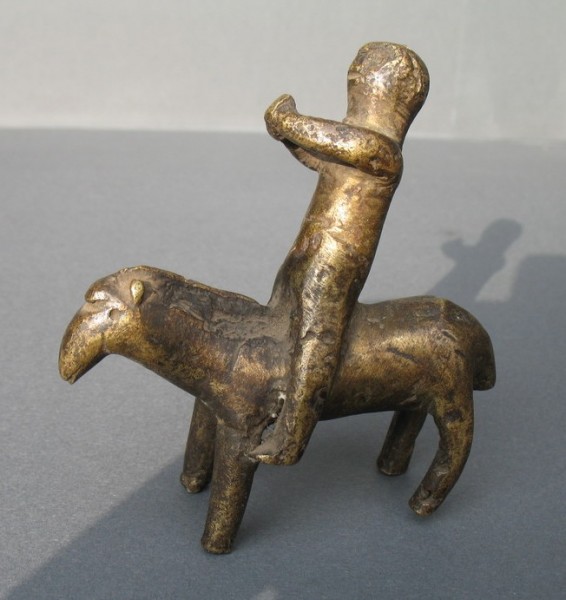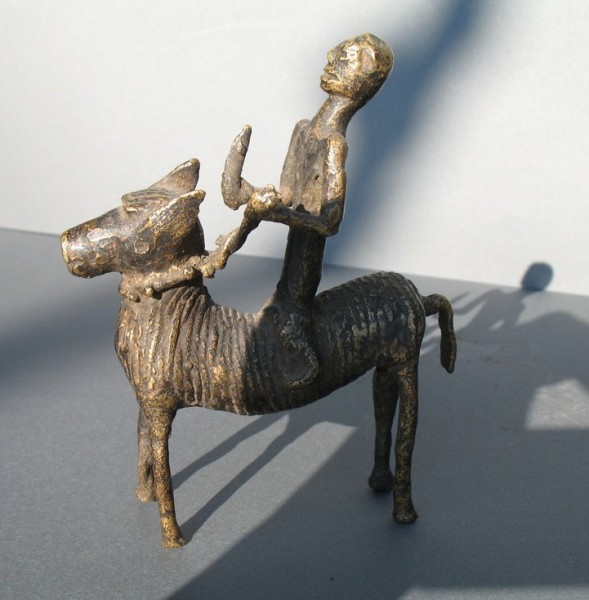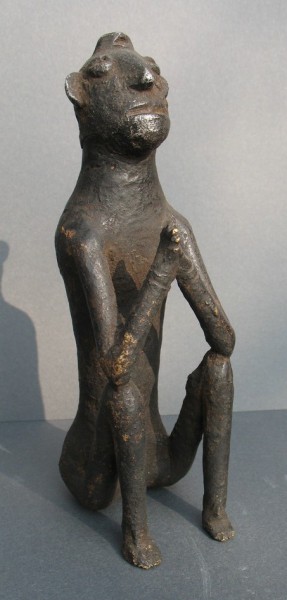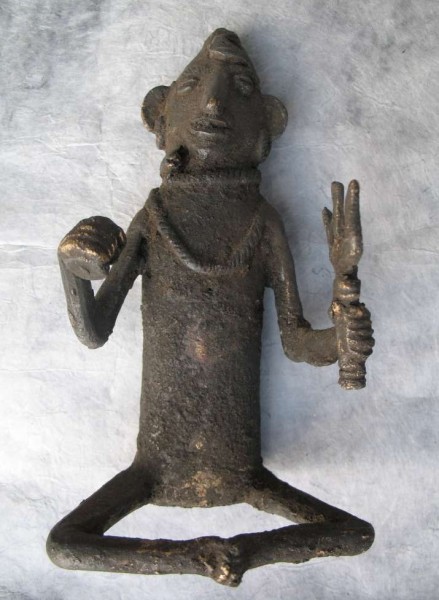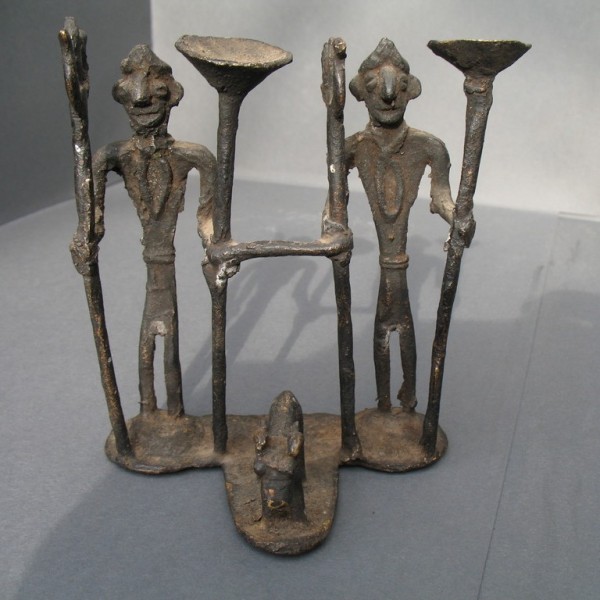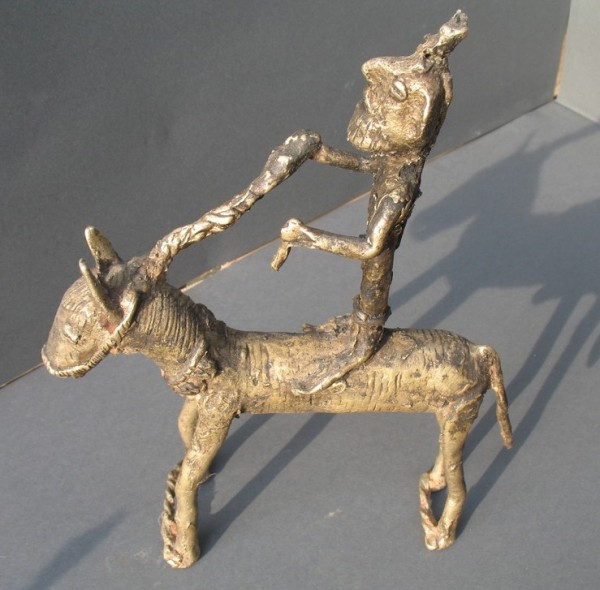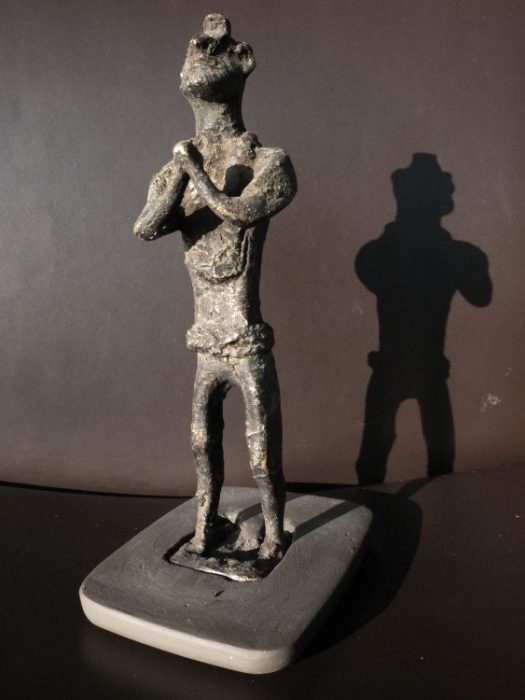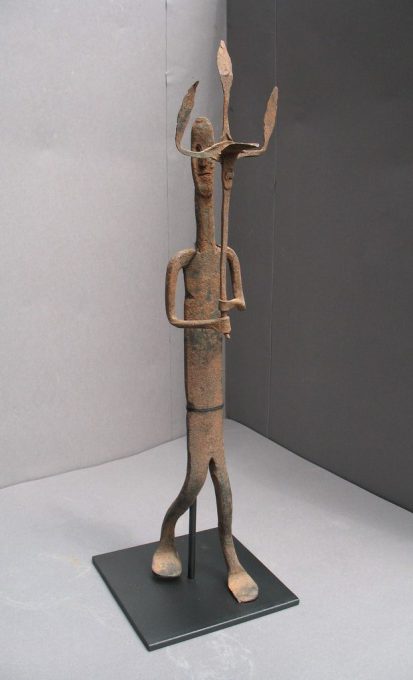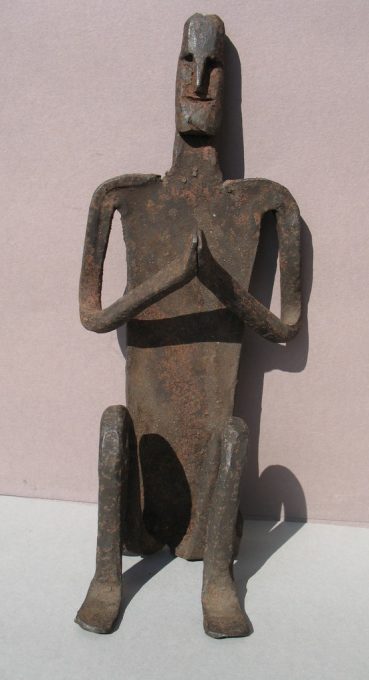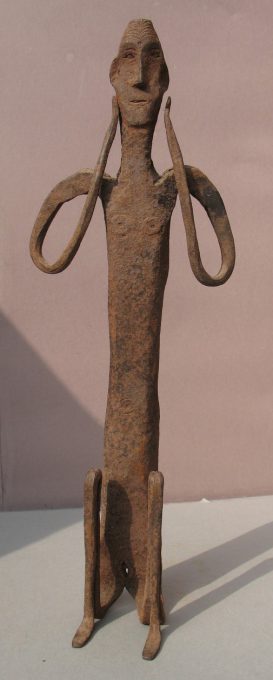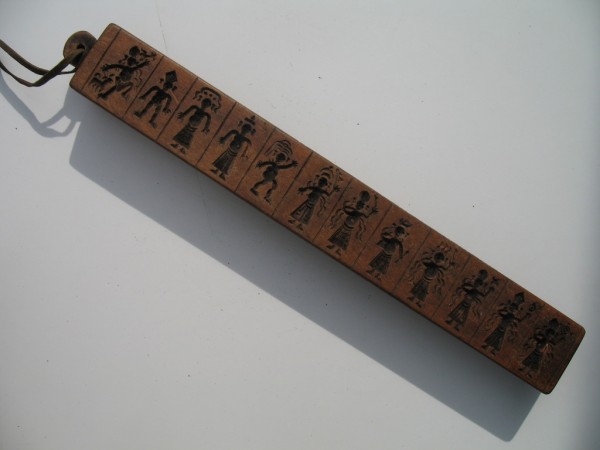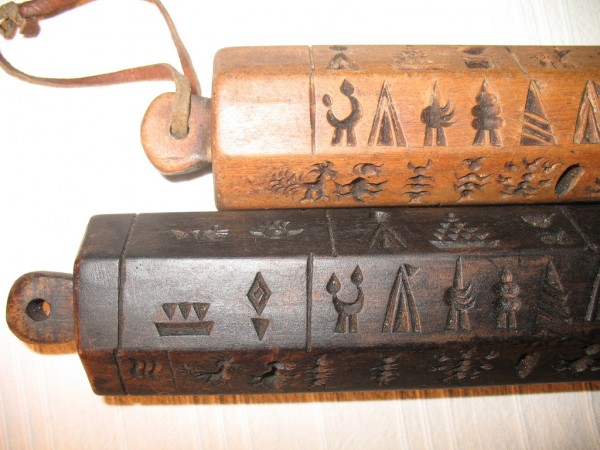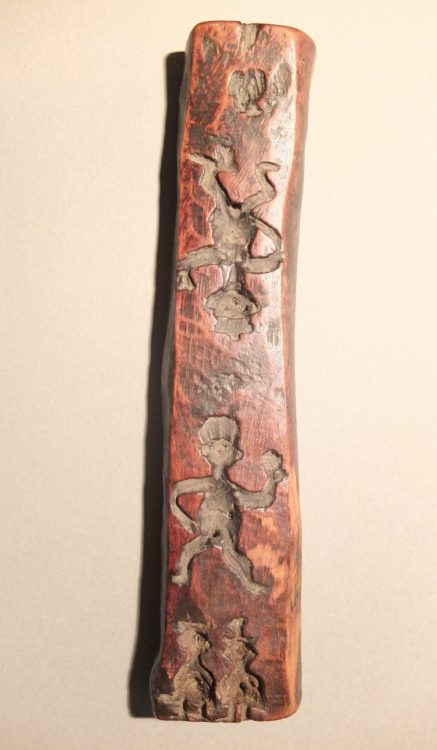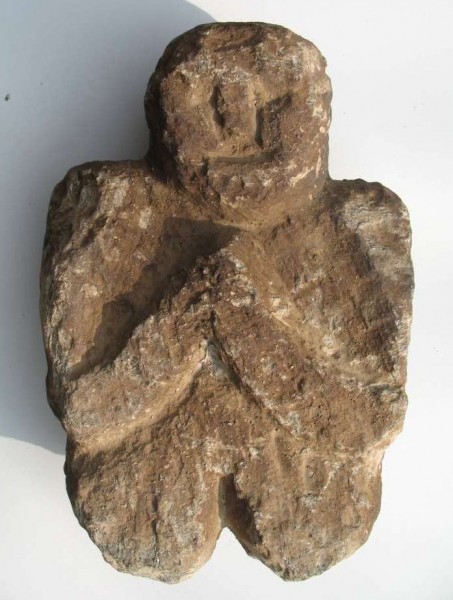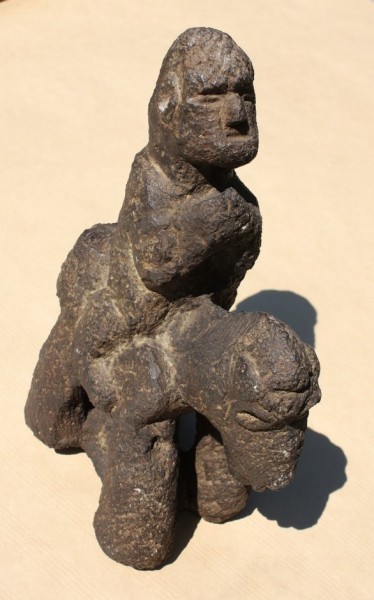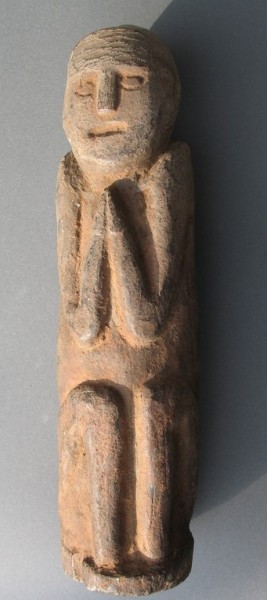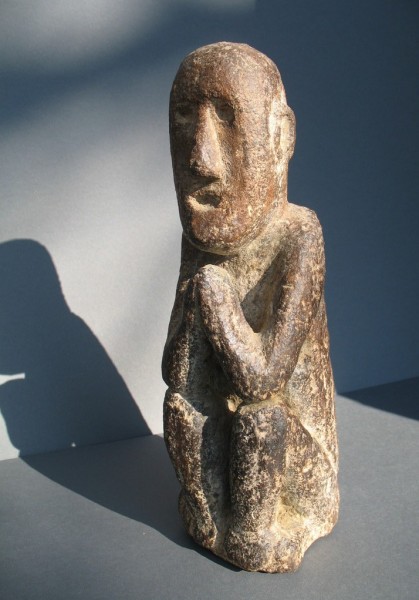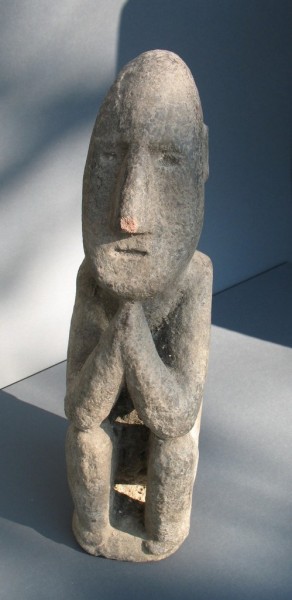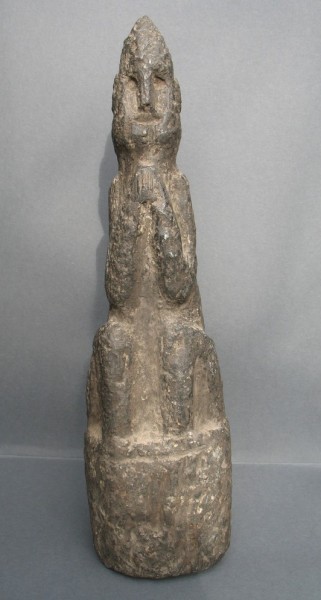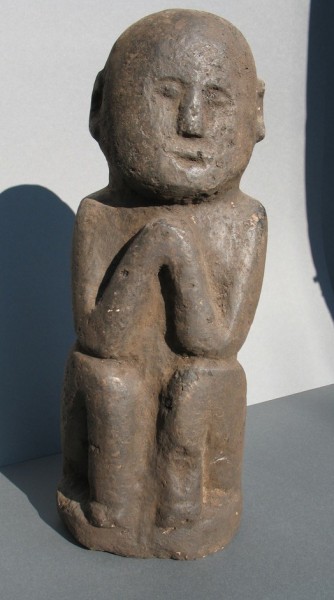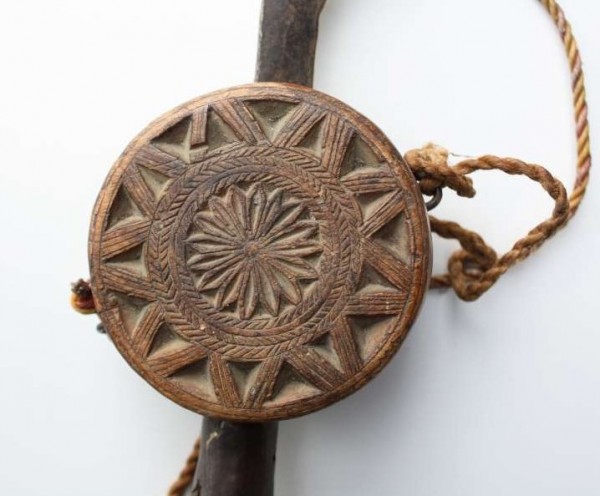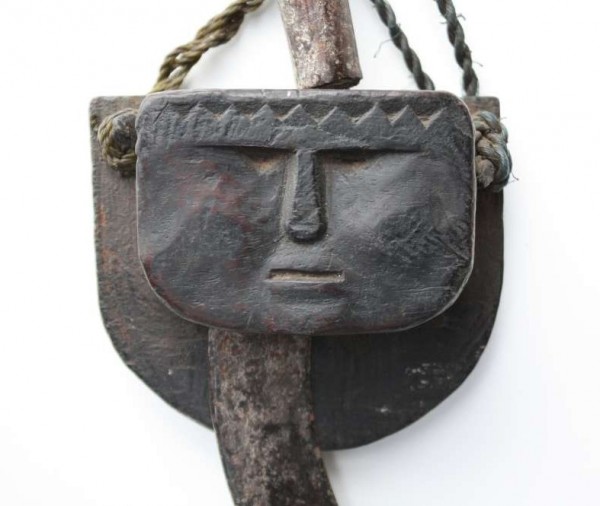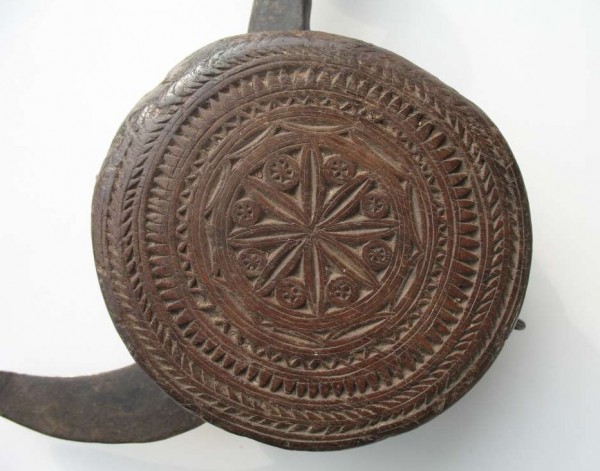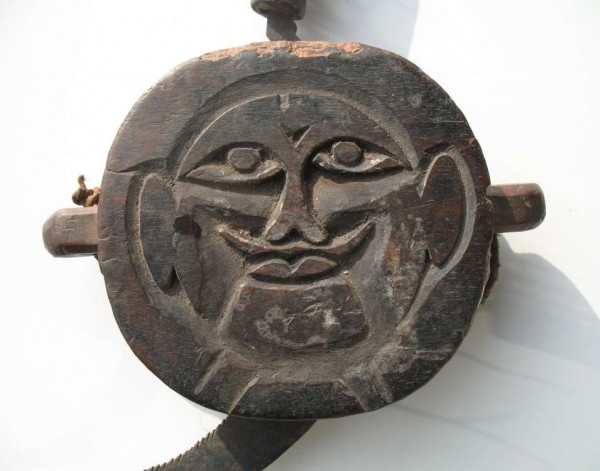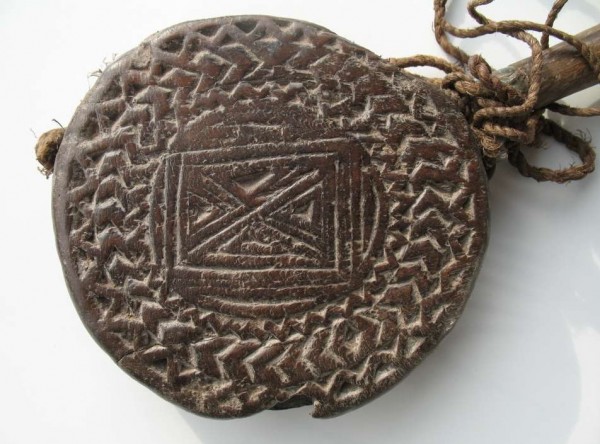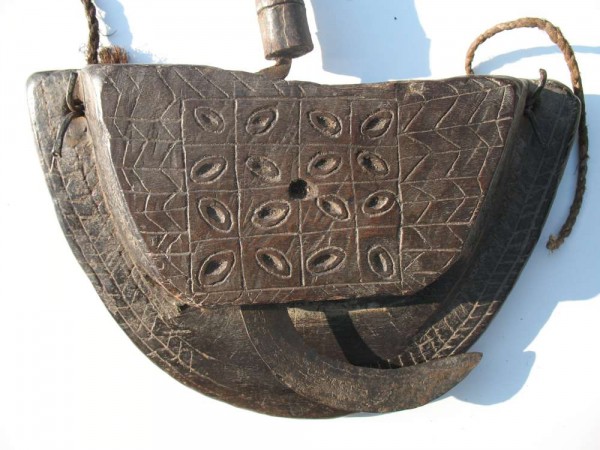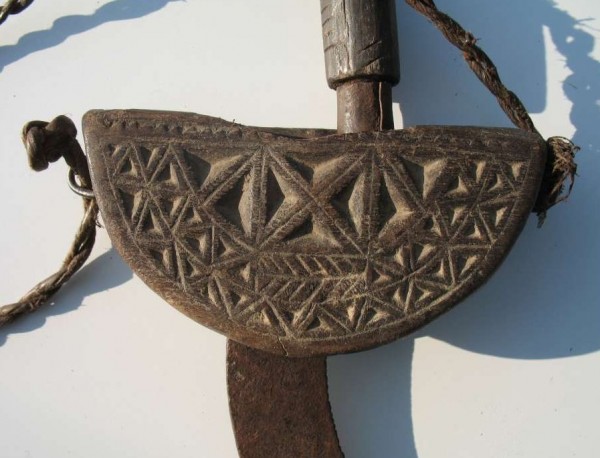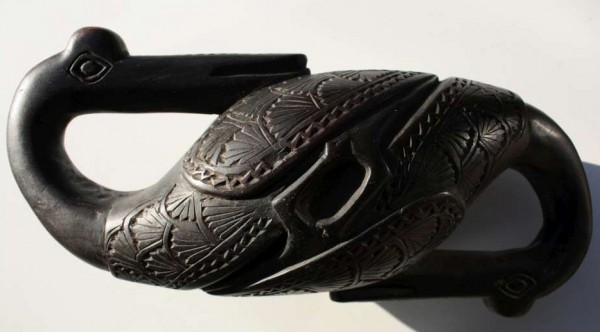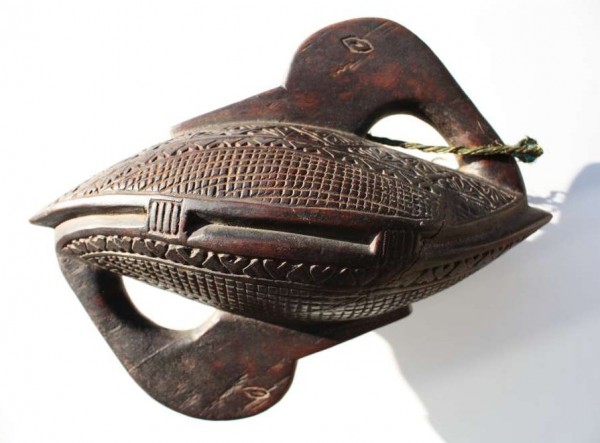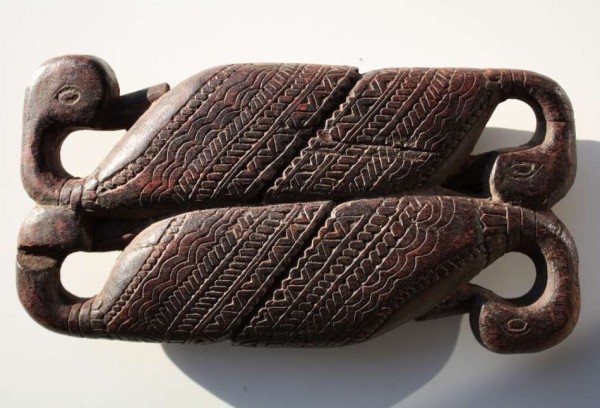Height: 9 cm Length: 8.7 cm Weight: 290 gram
Tribal Art from Nepal and the Himalaya
Ancient Abstract Equestrian
Feb 17
Equestrian With Khukri
Feb 22
When taking a side view of the statue, the position of arms and the legs forms a hourglass-shape, as described by Marc Petit (2006, p. 33).
Literature: M. Petit in: La statuaire archaique de l’quest du Nepal. Paris: Galerie Renaud Vanuxem, 2006.
Height: 17.5 cm Weight: 705 gram
Two Shamans with Cow
Feb 16
Height: 13 cm Length: 17 cm Weight: 655 gram
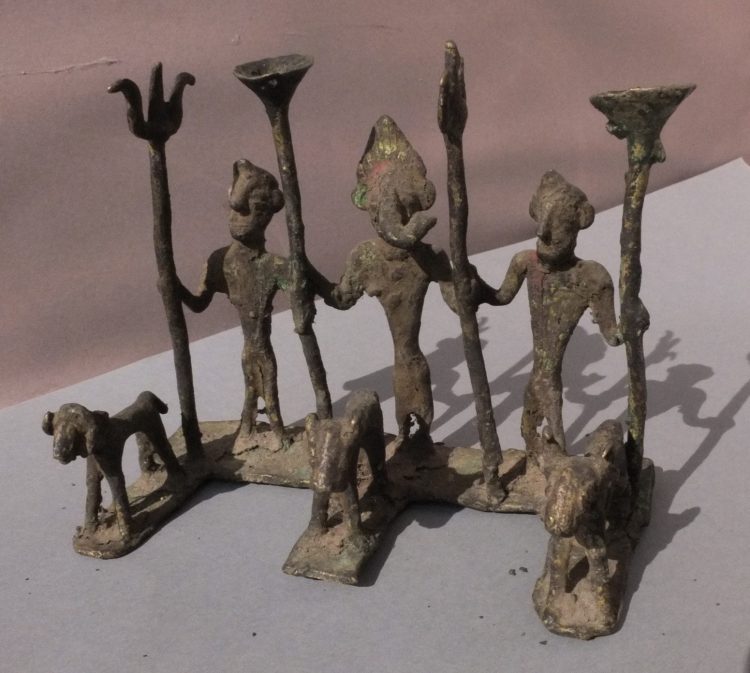
Shamans with Cows, View A
Shaman Riding a Horse
Feb 14
Shaman
Feb 27
Man With Kukhri
Nov 9
This sculpture consists of white metal alloy.
Height: 24 cm Weight: 240 gram
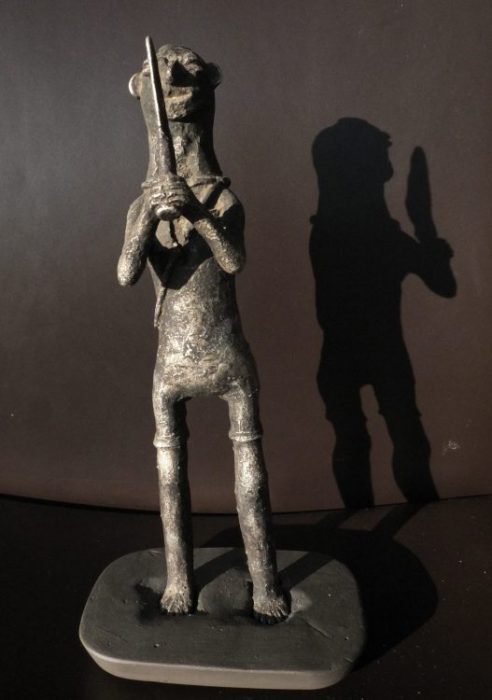
Man with Khukri, View A
Two Iron Statues
Mar 21
Height: 21.5 and 22.5 cm Weight: 525 and 670 gram
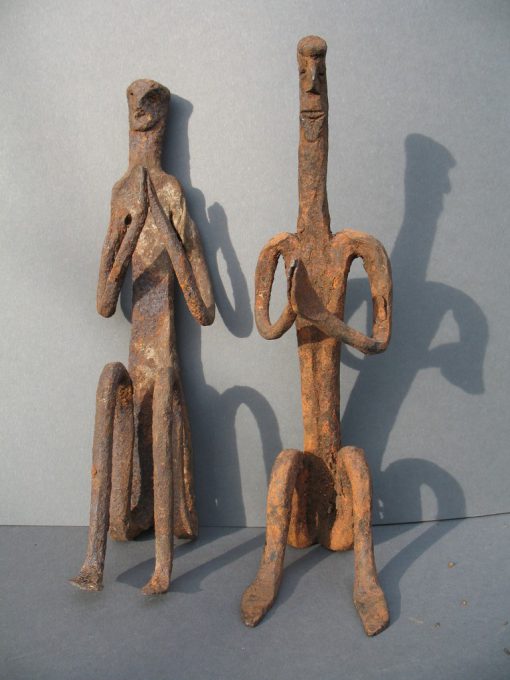
Two Iron Statues, View A
Christian Lequindre (personal communication May 15, 2011) kindly informed us that the two statues originate from the western region of Nepal. They are forming a couple, called in Nepali “Jora-Jori”. Sets of these sculptures (made by the Khami cast of blacksmith) are ex-votos offered to the main Masta shrine. Also see: M. Petit & C. Lequindre, Nepal. Shamanism and Tribal Sculpture. Infolio, 2009.
Height: Both 40 cm Weight: 2.42 and 2.58 kilogram
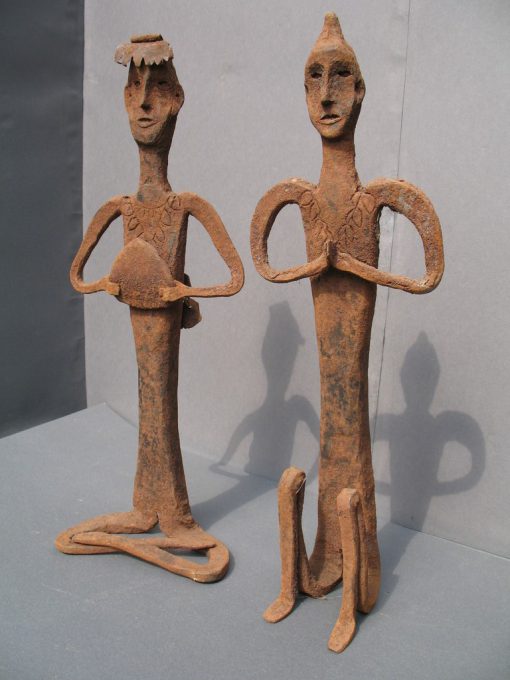
Two Iron Statues Forming a Couple, View A
Iron Statue With Trisul
Jun 27
Heavyweight Iron Statue
Apr 21
Iron Statue of a Woman
Aug 21
Height: 45 cm Weight: 3,5 kilogram
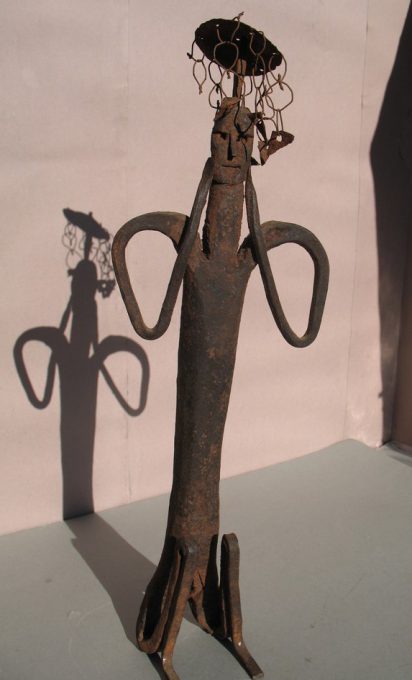
Iron Statue of a Woman with Hat, View A
Robert BRUNDAGE describes these objects in the following way: “Carvings of myriad ritual implements, animals, deities and demons are skillfully rendered in miniature. … Intricately carved images of esoteric ritual objects, demonic spirits and Buddhist protectors were carved into wooden sticks called Zanpar (zan-spar). Tsampa (barley meal and yak butter dough) was pressed into the appropriate images to produce ritual sacrificial offerings (T. glud) for good fortune and protection from malevolent spirits that often create disorder.”
Reference: Robert Brundage (http://www.artyeti.com/)
Paul MORSE on wooden mould sticks: “Dough molds were used in Tibetan popular rituals to make dough effigies … The ritual is a form of protection, exorcism, or ransom. The molds would be carried from a monastery by a trained monk to the home of anyone who wished to cure sickness or to deal with various misfortunes. The practitioner could chose from the dozens of small inscriptions on the board to identify the type of obstacle to be dealt with, be it human, animal, bird, supernatural, or symbolic. This accounts for the great number of carved images found on a single board. He then places a ball of dough (tsampa flour and water) onto the appropriate incised images, presses it to form an images of the objects and then places them on an offering plate located on a specially constructed altar. Chants by the practitioner expedite the transfer whatever impediments he discovered into the dough effigies.”
Reference: Paul Morse (http://www.trocadero.com/pmorse/)
Hexagonal Zanpar 1
Jun 8
Hexagonal Zanpar 2
Dec 11
Zanpar 3
Feb 25
Dimension: 11 x 6,5 x 2 cm Weight: 88 gram
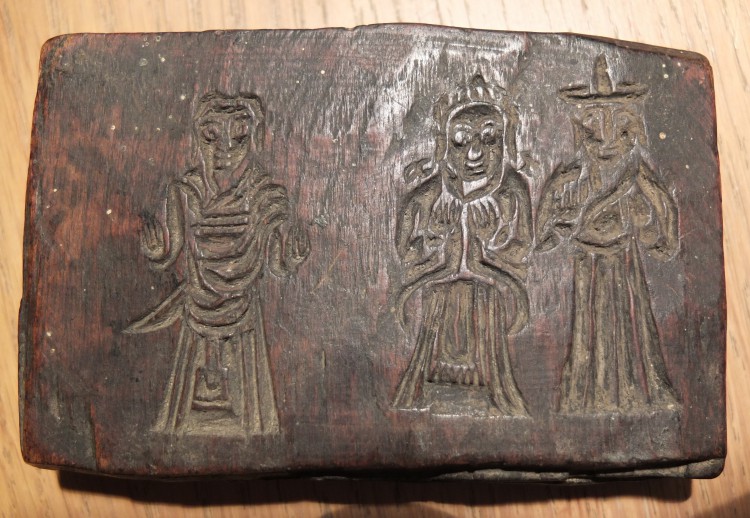
Zanpar 3, Side 1
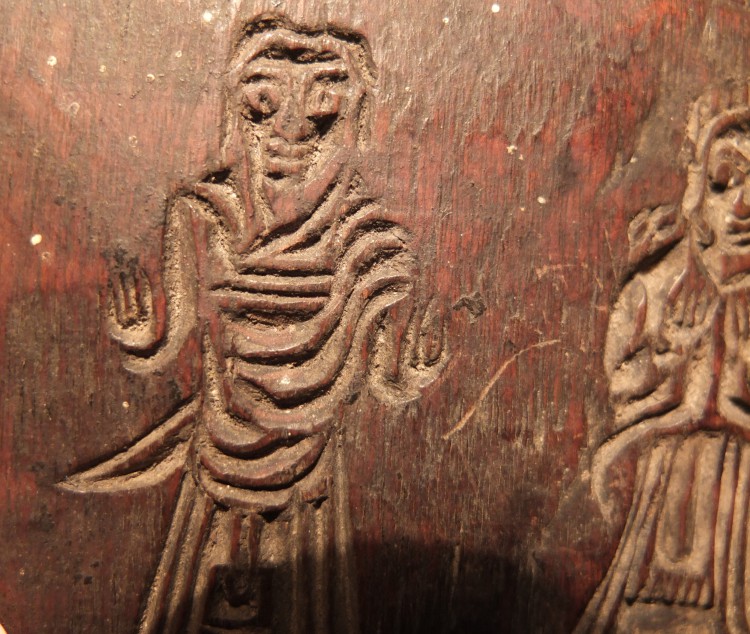
Zanpar 3, Side 1 Detail
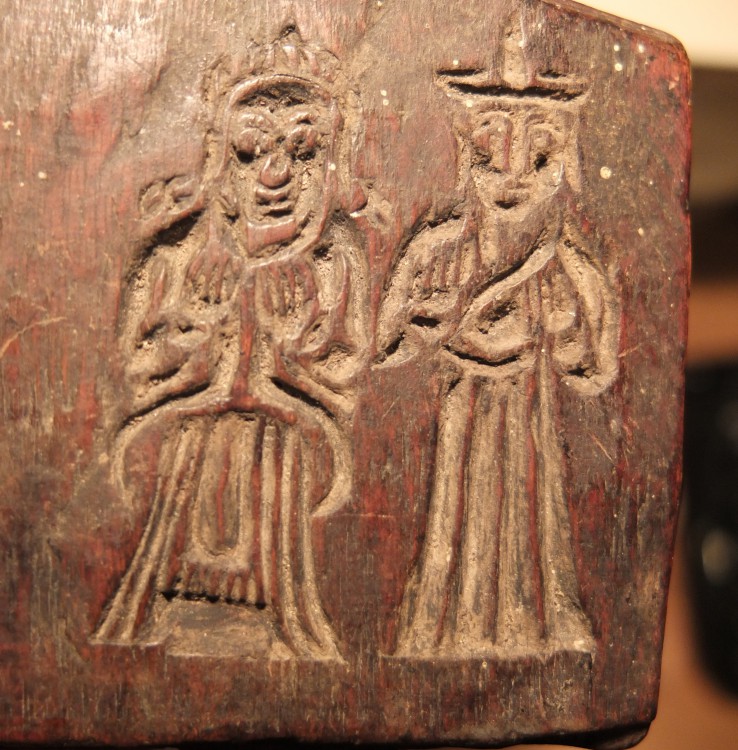
Zanpar 3, Side 1, Detail

Zanpar 3, Side 2
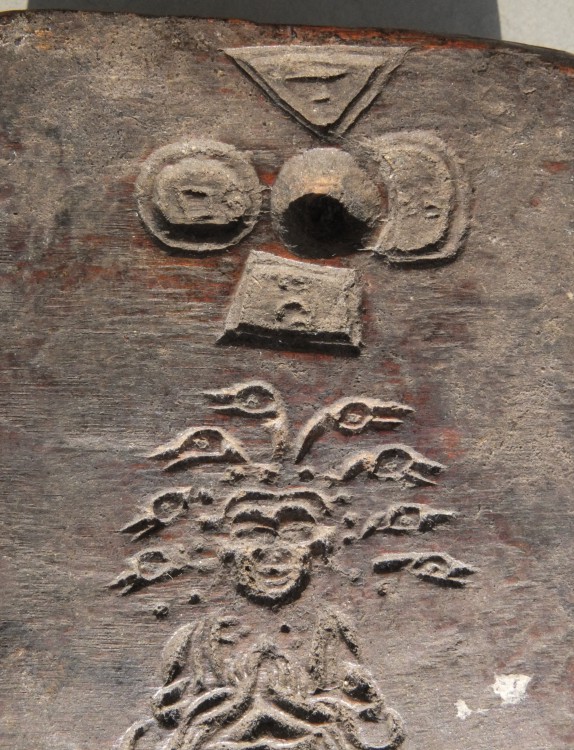
Zanpar 3, Side 2, Detail
Zanpar 4
Feb 27
42,5 x 6 x 2 cm

Zanpar 4, Side 1
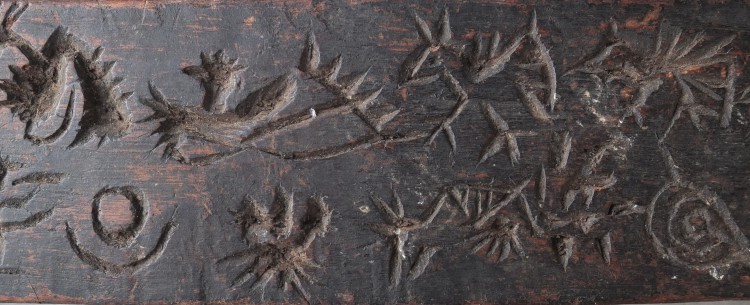
Zanpar 4, Side 1, Detail
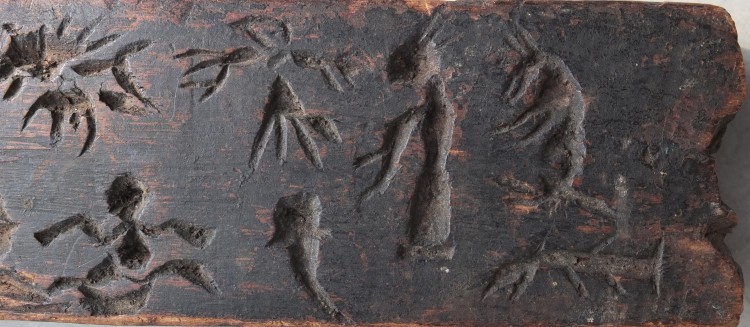
Zanpar 4, Side 1, Detail
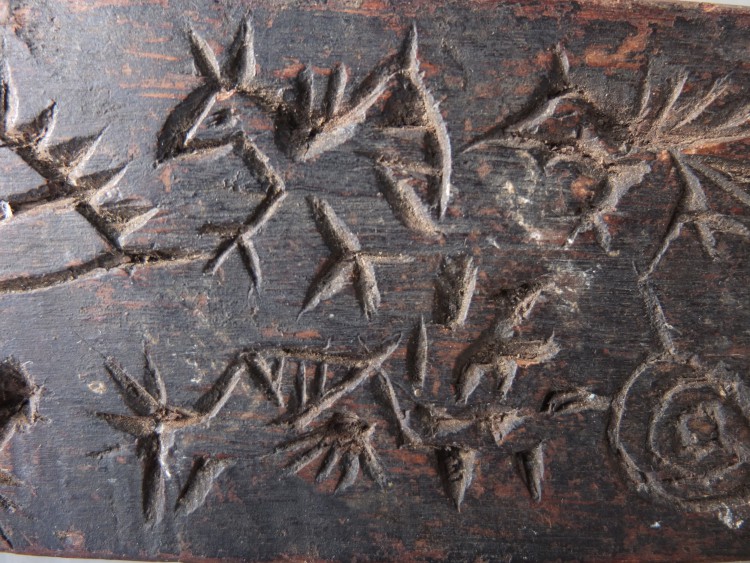
Zanpar 4, Side 1, Detail
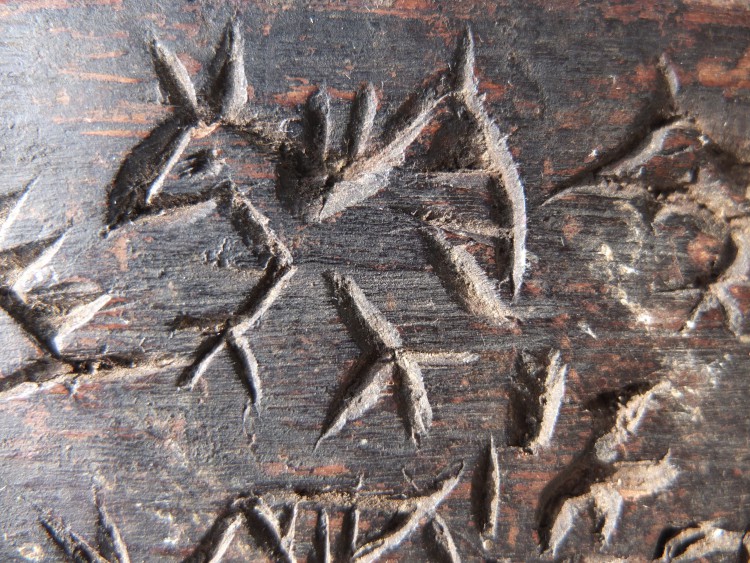
Zanpar 4, Side 1, Detail

Zanpar 4, Side 2
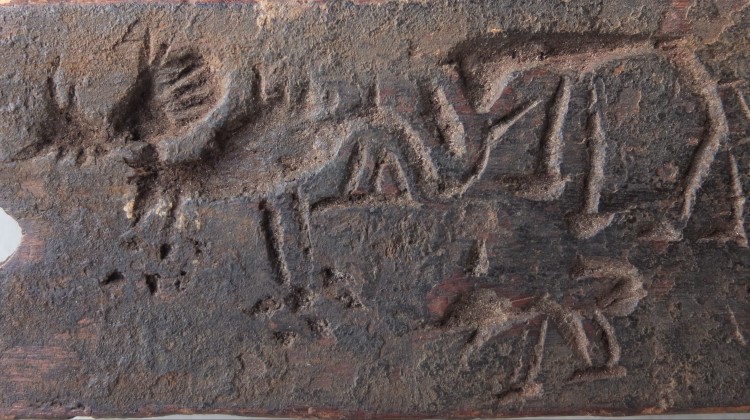
Zanpar 4, Side 2, Detail
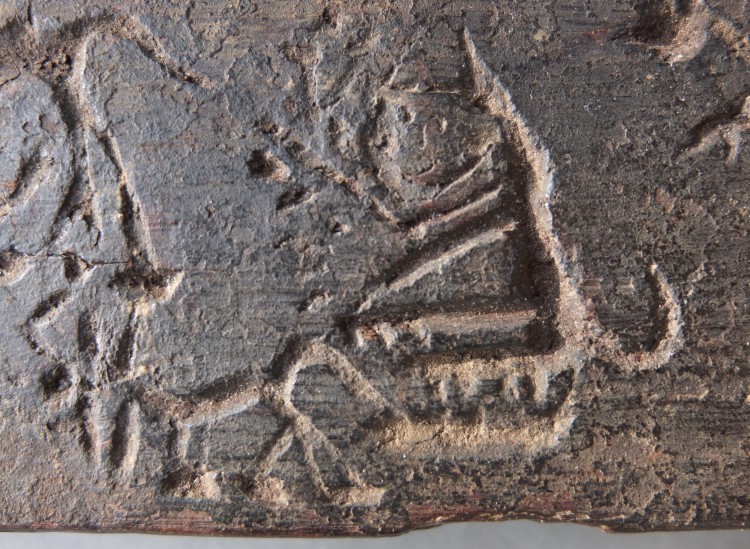
Zanpar 4, Side 2, Detail
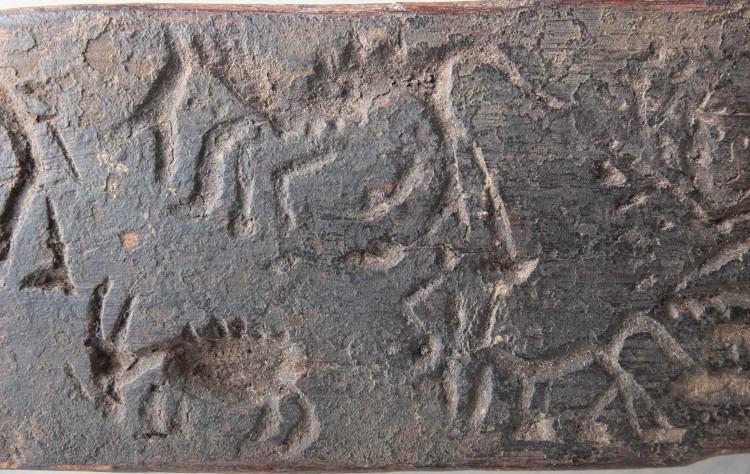
Zanpar 4, Side 2, Detail
Zanpar 5
Jan 20
This archaic, very heavy stone statue consists of mica schist (Glimmerschiefer). Therefore, originally (without patina) the statue must have had a beautiful silver glance, especially when it was sunlit. Because of its shape and bottom, we assume that the statue did not stand upright but was laying, perhaps in a field in order to assure the fertility of the soil.
Height: 28 cm Width: 18 cm Depth: 8 cm Weight: 6,6 Kilogram
This archaic sculpture consists of greyish dense stone. It depicts a stylized male figure riding a very stylized horse. The rider has a fine carved head and a mystic facial expression; the arms are joined in a Namaste gesture.
Photos by Anjuli Barber
Height: 22,5 cm Width: 14 cm Weight: 2200 gram
Stone Statue 3
Feb 15
Stone Statue 4
Feb 15
Height: 22 cm Weight: 2.98 kilogram
Stone Statue 6
Feb 22
Stone Statue 7
Feb 23
Height: 35.5 cm Weight: 3.57 kilogram
Stone Statue 9
Feb 24
Because of the minimalistic design and the strong facial expression, this very heavy object belongs to our favourite statues.
Height: 36 cm Weight: 8.65 kilogram
Stone Statue 10
Mar 16
Material: Quartz Height: 22.5 cm Weight: 3.33 kilogram
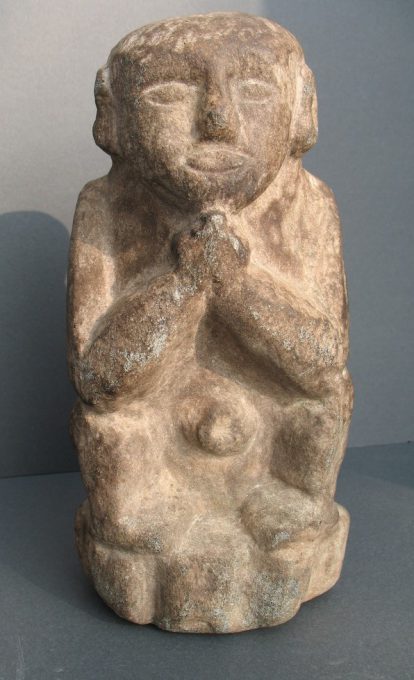
Stone Statue 10, View A
The seven sculptures with animal Heads, presented below, come from the Terai region, most probably from the Rajbanshi tribe in the eastern south of the Terai. The seven objects were acquired as a group and, therefore, seem to form an ensemble used by a tribal puppeteer traveling from village to village, playing instruments, telling stories etc.
Length: 31 cm Height: 26.6 cm Weight: ca. 1000 gram
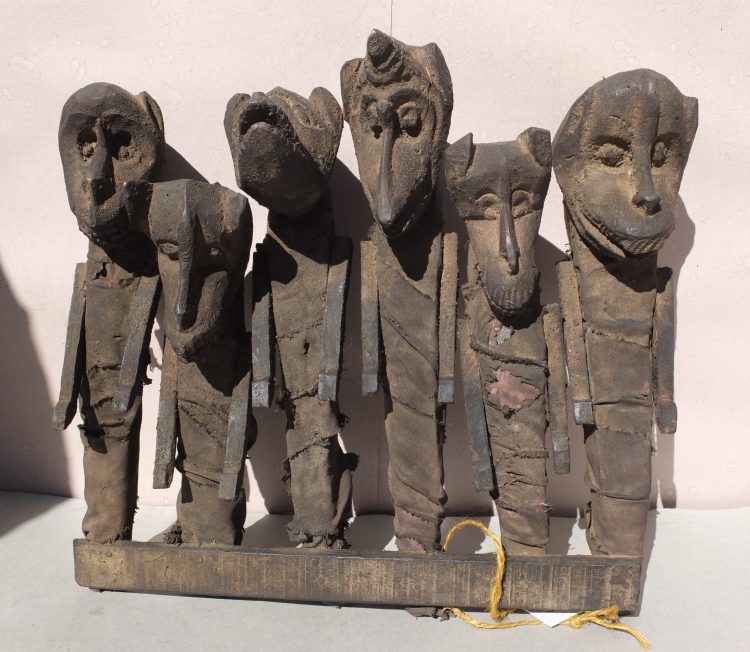
Animal Heads 1, View A
Height: 31 cm Length: 29 cm Weight: ca. 900 gram
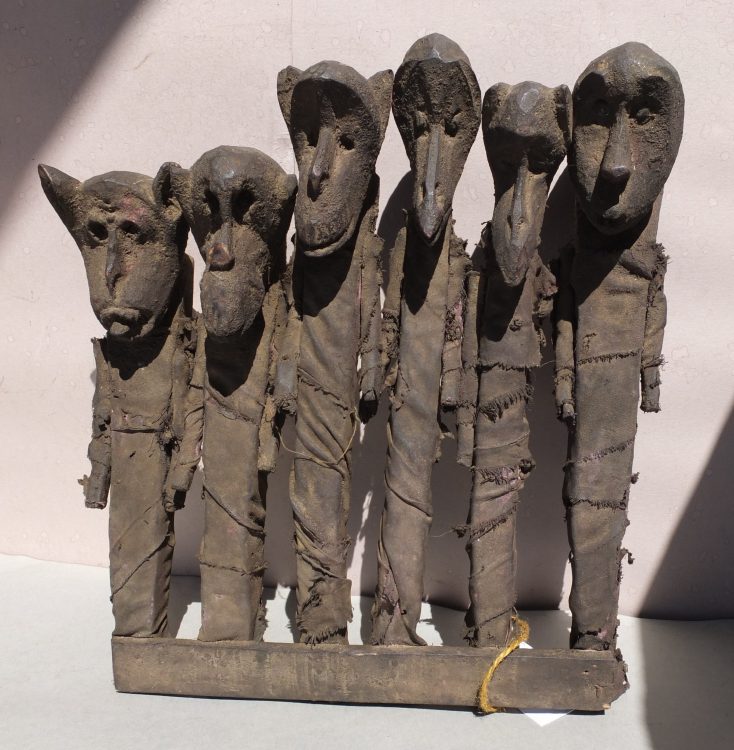
Animal Heads 2, View A
Height: 29 cm Length: 37 cm Weight: ca. 1000 gram
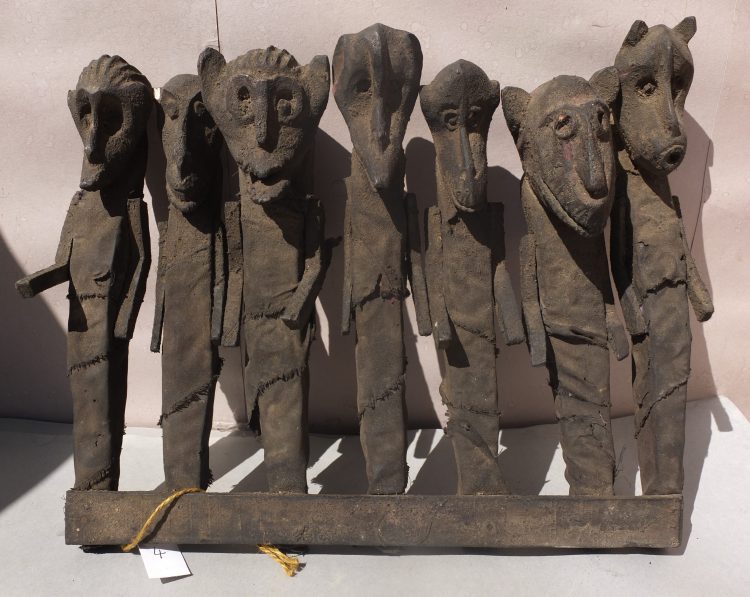
Animal Heads 4, View A
Height: 30 cm Length: 39 cm Weight: ca. 1400 gram
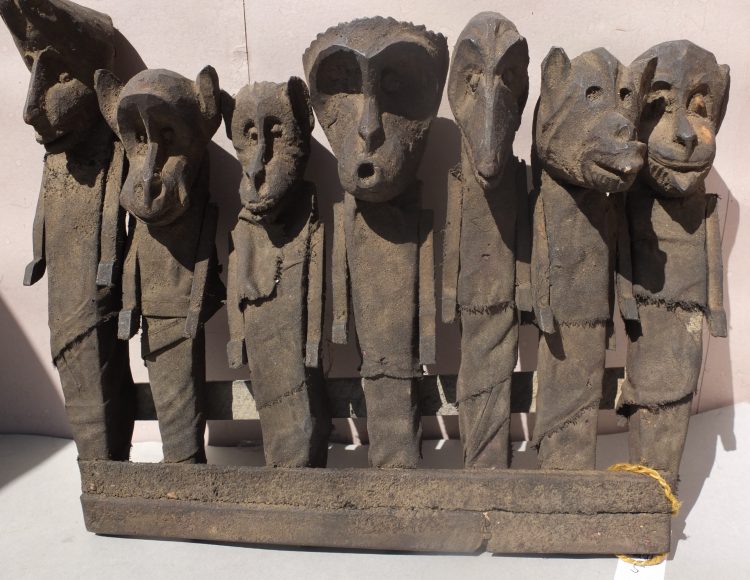
Animal Heads 5, View A
Height: 29 cm Length: 31 cm Weight: ca. 850 gram
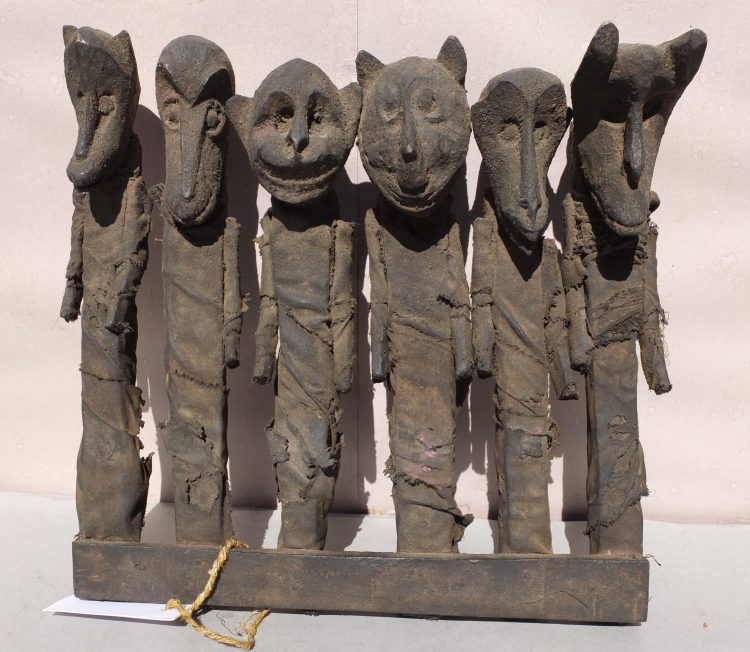
Animal Heads 6, View A
Height: 28.5 cm Length: 33 cm Weight: ca. 970 gram
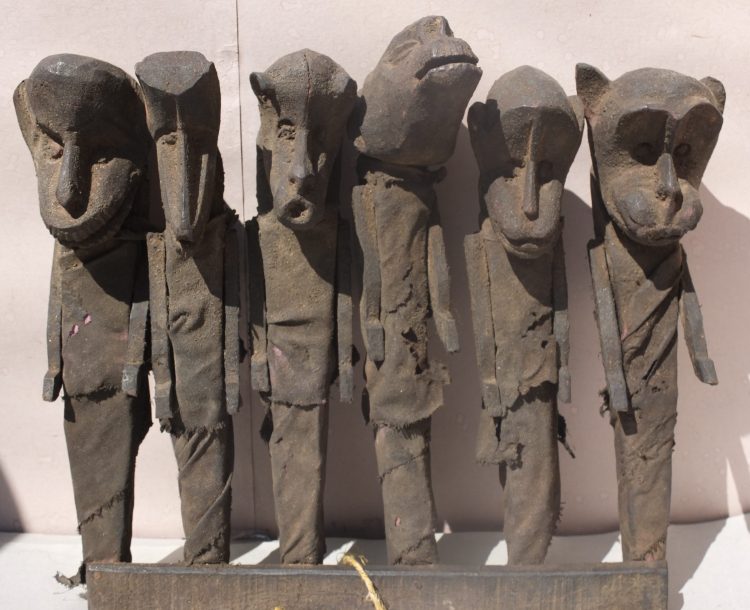
Animal Heads 7, View A
in preparation
Sickle Holder 1
Jan 24
Sickle Holder 2
Jan 24
Length: 9 cm Height: 7,5 cm Width: 3,5 cm Weight: 85 gram
Sickle Holder 3
Jan 31
Diameter of the holder: 9,5 cm Depth: 3,5 cm Weight: 123 gram
Sickle Holder 4
Jan 31
Sickle Holder 5
Jan 31
Diameter of the holder: 10 cm Depth: 2,5 cm Weight: 95 gram
Sickle Holder 6
Feb 28
Height: 14 cm Width: 22 cm Depth: 3 cm Weight: 275 gram
On the back of this sickle holder a musician is carved playing different instruments.
Sickle Holder 7
Feb 28
Width: xx cm Height: xx cm Depth: xx cm Weight: xxx gram
On the back of the holder a date is carved in Nepalese numerals (the corresponding Arabic numerals are 2041). Normally, the first two numerals indicate the year, and the third and fourth numeral indicate the month and the day, respectively. By converting the Nepalese calendar into the Christian calendar, the first two numerals probably indicate the year 1963.
The doublebird sculptures presented here were marriage gifts. Marc Petit and Christian Lequindre describe them in their unique book in the following way: “A similar preciousness can be seen in a rare type of object whose intriguing shape of double spiral — figuratively interpreted as an upside-down pair of birds, swans, or ducks — can be explained both by its specific function and the circumstances in which it was used. Called gunta kasne (or guneko), in Rai country these items are a gift from the bride’s parents, to be used to bind the pieces of fabric that constitute her dowry. … Beyond their practical value, such items … are clearly conceived by the givers as an artistic symbolic testimony of love and faithfulness” (Petit & Lequindre, 2009, p. 47).
“gunta kasne”means in English “to tie up a bundle”, in German “ein Bündel schnüren”.
The quality (elaborateness) of the doublebird sculptures presented here varies considerably. While sculptures 1, 4 , 5, 8 and 9 are impressive because of their form and their very fine elaborated floral design, sculpture 3 — in contrast — is a relatively simple object.
Reference: Petit, M. and Lequindre, C. (2009). Nepal. Shamanism and Tribal Sculpture. Infolio.
Length: 31 cm Height: 12,5 cm Width: 12 cm Weight: 1190 gram
Length: 22,5 cm Height: 17,5 cm Width: 11 cm Weight: 580 gram
Length: 19 cm Height: 10 cm Width: 2,5 cm Weight: 290 gram
